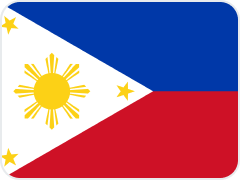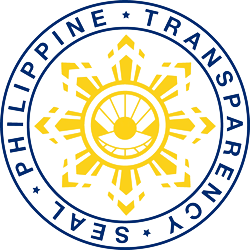

Under Review GSP
U.S. Generalized System of Preferences
The Status of GSP with the United States:
What Philippine
Exporters Need to Know
Overview of the U.S. Generalized System of Preferences (GSP)
The United States Generalized System of Preferences (GSP) provides preferential tariff treatment to developing countries, granting them duty-free entry for specific products into the U.S. market. However, the Philippines is currently not receiving GSP benefits under the U.S. scheme. While the status of the Philippines is under review, Philippine exporters are not eligible for GSP benefits at this time.
This has significant implications for Philippine businesses exporting to the U.S., as they will now face the standard Most Favored Nation (MFN) tariff rates, reducing the price competitiveness of their products in the U.S. market.
Implications of the GSP Removal for Philippine Exporters
With the Philippines not currently a beneficiary of the U.S. GSP, exporters will experience the following impacts:
Higher TariffsProducts like coconut, fruits, and fishery products will no longer receive preferential treatment, leading to higher costs for Korean importers and reduced demand for Philippine goods.
The industries most affected include:
- Agriculture
- Textiles
and
Garments - Manufacturing
-
Agriculture
Products such as coconut oil, tropical fruits (bananas, pineapples), and seafood will now be subject to MFN tariffs.
-
Textiles and Garments
Philippine-made garments, which previously enjoyed duty-free access, will face tariffs, potentially reducing demand from U.S. importers.
-
Manufacturing
Products such as electronics and industrial goods exported from the Philippines will now be more expensive for U.S. buyers due to the loss of preferential tariff rates.
Strategies to Mitigate the Impact of GSP Ineligibility
While the U.S. GSP status of the Philippines is under review, Philippine exporters can adopt several strategies to reduce the impact of the lack of GSP benefits:
While GSP benefits are not currently available, exporters should look into other trade agreements such as the Philippines-U.S. Trade and Investment Framework Agreement (TIFA) or the ASEAN-U.S. Trade and Investment Framework Arrangement. Although these do not offer immediate tariff relief, they provide platforms to enhance trade relations and explore future trade opportunities.
Philippine exporters can focus on diversifying their markets by targeting other countries where GSP or preferential tariff schemes are still in place. Exploring markets in Asia, Europe, or other regions can help mitigate the negative effects of losing GSP benefits in the U.S.
Shifting towards high-value or niche products that offer greater profit margins may help offset the increased costs from higher tariffs. For example, organic agricultural products, sustainable textiles, or premium electronics can still find demand in the U.S. despite higher tariffs.
Focusing on branding and quality can help Filipino exporters differentiate their products in the U.S. market. By promoting sustainability, innovation, or premium quality, Philippine businesses can justify higher prices and retain their market position even without GSP benefits.
Key Affected Sectors and Tariff Changes
Several industries in the Philippines will experience direct impacts due to the lack of GSP benefits in the U.S. market:
Products like tropical fruits, coconut oil, and fishery products will now face higher tariffs, which may reduce their competitiveness in the U.S. market. Exporters should explore premium markets or alternative destinations.
The Philippine textile and garment industry, which previously enjoyed duty-free status for many products, will now face standard tariffs. This could lead to reduced demand from U.S. buyers unless exporters can justify their higher prices through branding or product differentiation.
Electronics, machinery, and other manufactured goods will now be subject to MFN tariffs. Businesses in these sectors may need to adjust their pricing strategies to remain competitive.
Steps for the Future: Monitoring and Preparation
Philippine businesses must stay informed about the ongoing review of the Philippines' GSP status. In the meantime, exporters should:
Monitor developments on the U.S. review of the Philippines’ GSP status. The Office of the United States Trade Representative (USTR) regularly reviews GSP eligibility for beneficiary countries. If the Philippines' status changes, businesses should be ready to immediately leverage the benefits.
Philippine businesses can seek support and guidance from the Department of Trade and Industry (DTI) and the Philippine Export Development Council for updates on GSP developments and strategies to navigate the current tariff landscape.
Philippine exporters should prepare for the possibility of prolonged ineligibility by adjusting their long-term trade strategies. Businesses should focus on developing markets, improving operational efficiency, and leveraging other trade facilitation programs.
FAQs for Philippine Exporters Regarding U.S. GSP
Why is the Philippines not receiving GSP benefits from the U.S.?
The Philippines' GSP status is currently under review by the U.S. government. Until the review is concluded, the Philippines is not eligible for GSP benefits, meaning exports to the U.S. will be subject to standard tariffs.
What tariffs will Philippine products face in the U.S. now?
Philippine products that previously enjoyed duty-free access under the GSP will now face Most Favored Nation (MFN) tariff rates, which vary by product category.
Are there other trade agreements between the Philippines and the U.S. that could reduce tariffs?
While there are no direct tariff reduction agreements in place, bilateral discussions under the Philippines-U.S. Trade and Investment Framework Agreement (TIFA) may present opportunities for improved trade relations.





